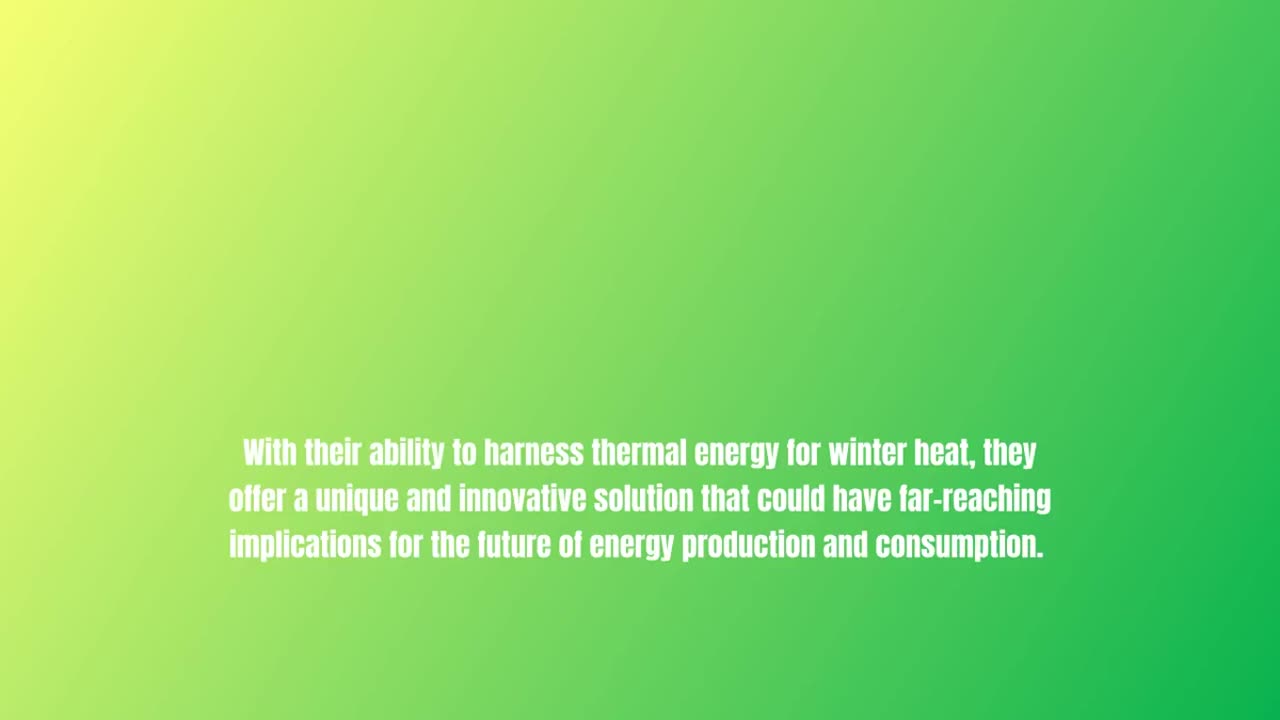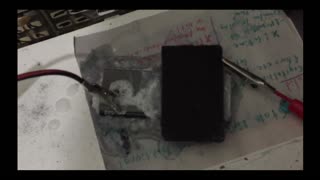Premium Only Content

Revolutionary Windows Harnessing Thermal Energy for Winter Heat
Revolutionary Windows: Harnessing Thermal Energy for Winter Heat"
I heard about this idea a while back and decided to share it with some of my ideas that could make this work. Food for thought. I figured this is interesting and many will appreciate. Don't ask me how to build it! I'm asking all of you how we could build it! :)
As the winter season sets in, heating costs can skyrocket, making it difficult for households to stay warm without breaking the bank. But what if there was a way to harness the power of thermal energy to keep your home warm? That's where revolutionary windows come in.
The concept behind these windows is simple yet innovative. One side of the window is designed to pull the cold air from the freezing outside, while the other side is designed to pull the heat from the inside. This thermal reaction creates or powers a heat source that can keep your home warm and cozy throughout the winter season.
To achieve this, the windows helps to transform the temperature difference into electrical energy. This electrical energy is then used to power a feedback loop between two coils, which increases the amplitude of the thermal reaction.
The result is a cost-effective and energy-efficient solution that can be used in homes, offices, and other buildings. By harnessing the power of thermal energy, these revolutionary windows can help to reduce heating costs and provide a more sustainable source of heat.
In addition to being a practical solution for winter heating, these windows also have the potential to be used in other applications. For example, they could be used in greenhouses or other agricultural settings to help regulate temperature and provide a more stable growing environment.
Overall, revolutionary windows represent an exciting development in the world of sustainable energy. With their ability to harness thermal energy for winter heat, they offer a unique and innovative solution that could have far-reaching implications for the future of energy production and consumption.
To take this concept a step further, solar power can also be incorporated into the design by using a solar diode as an oscillator instead of a traditional solar panel. This oscillator can also be used with two coils to create an additional feedback loop, which can increase output.
The combination of thermal and solar power in this way provides a sustainable and renewable source of energy, as well as a means of reducing energy costs and environmental impact. Additionally, this approach can provide an innovative and unique way to utilize windows in buildings, making them a source of green energy instead of simply a passive component of construction.
While this concept is still in the early stages of development, it holds great potential for providing an alternative energy source that is accessible, affordable, and environmentally friendly. With continued research and development, it may one day become a significant contributor to the world's energy supply, helping to mitigate climate change and reduce dependence on fossil fuels.
To construct your window, you could potentially use a thin film of bismuth telluride sandwiched between two layers of glass. The layer of bismuth telluride would be in contact with the outside air, while the layer of glass on the inside would be in contact with the warmer indoor air. As heat flows from the inside to the outside, the bismuth telluride layer would generate an electrical potential that could be used to power a heating element or to charge a battery for later use.
Of course, there would be many design considerations and challenges to overcome in creating a functional window like this, including the need to maintain a seal between the inside and outside environments, optimizing the materials used for maximum efficiency, and dealing with the variability of outdoor temperatures. But with careful planning and experimentation, it could be possible to create a window that helps regulate indoor temperatures using the power of thermoelectricity.
Forum
http://typeright.social/forum
Please Help Support My Research: https://youtu.be/pYXETBB40j0
-
 6:21
6:21
Joel Lagace
5 months ago $0.04 earnedHigh Power Crystal Cell
107 -
 2:23:16
2:23:16
Kim Iversen
11 hours agoElection 2024 Predictions: The Simpsons, A Hippo, Astrology and Experts Predict Trump vs Harris
119K152 -
 1:59:42
1:59:42
Glenn Greenwald
11 hours agoElection Eve Special With Michael Tracey, Briahna Joy Gray & Zaid Jilani | SYSTEM UPDATE #362
167K198 -
 3:47:50
3:47:50
VOPUSARADIO
1 day agoPOLITI-SHOCK! ELECTION COUNTDOWN W/ FMR CIA OFFICER KEVIN SHIPP & KENT HECKENLIVELY
84.4K1 -
 59:08
59:08
PMG
16 hours ago $19.80 earned"Fluoride, Chemtrails & Depopulation: The SHOCKING Truth THEY Don't Want You to Know"
71.3K7 -
 1:00:55
1:00:55
Donald Trump Jr.
15 hours agoWe Show Up. We Win. This is the Election to Save America | TRIGGERED Ep.188
183K205 -
 2:29:19
2:29:19
WeAreChange
12 hours agoRon Paul Joins Team MAGA! Dr. No Saves The Day?!
104K14 -
 1:03:16
1:03:16
The StoneZONE with Roger Stone
12 hours agoWill the Trump – RFK Alliance Prevail? The StoneZONE w/ Roger Stone
59.9K4 -
 1:01:53
1:01:53
We Like Shooting
21 hours ago $3.76 earnedDouble Tap 382 (Gun Podcast)
28K1 -
 5:05:52
5:05:52
Tundra Gaming Live
12 hours ago $2.98 earned🛑🧟 ♂ Better Dead Than A Zed Amiright???🧟 ♂ 🛑
31.3K